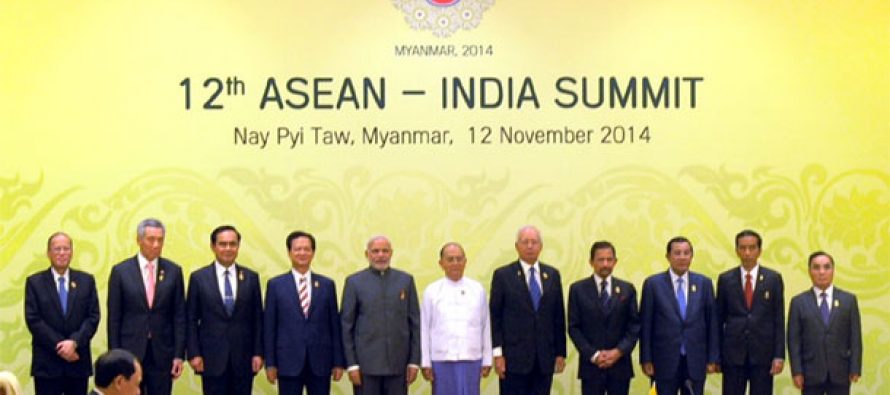
India’s Prime Minister, Narendra Modi, launched a policy with a bold vision and daring goal in 2014 at the 12th ASEAN-India Summit in Myanmar. The “Act East Policy (AEP)” is an effort that aims to strengthen ties between India and the BIMSTEC, ASEAN, and Indo-Pacific countries.
The cornerstone of this policy is India’s Northeast Region (NER), which shares over 4,500 km of international borders with Bangladesh, Bhutan, China, Myanmar, and Nepal. With 2.81 billion people, or 40% of the world’s population, the NER is ideally situated to serve as a link between Southeast Asia, South Asia, and Asia. Given that it shares a 1,643 km border with the states of Arunachal Pradesh, Manipur, Mizoram, and Nagaland, Myanmar in particular is crucial to this. India’s diplomatic mission in the region spans a number of venues, including BIMSTEC, ASEAN, and the Indo-Pacific states forum.
The NER is a hidden powerhouse that is ready to transform into a humming commercial centre. India and countries in Southeast and South Asia, including Myanmar, Thailand, Bangladesh, Bhutan, Nepal, and the ASEAN countries of Brunei, Cambodia, Indonesia, Laos, Malaysia, the Philippines, Singapore, and Vietnam, are connected by a potential economic corridor. The Regional Comprehensive Economic Partnership (RCEP), the first free trade agreement bloc among the biggest economies in Asia, was signed by countries in the region in November 2020. The potential of the NER is further highlighted by the fact that these countries provide almost 30% of the world’s GDP ($29.7 trillion).
ASEAN is currently India’s fourth-largest commercial partner, and trade between the two regions has shown significant rise. In FY2017, there was an increase of about 10% to $71.6 billion, and exports rose by 24.3% to $31.07 billion at the same time. Potentially attractive markets for businesses in the Northeast include Japan and the ASEAN area.
As of right now, ASEAN ranks as India’s fourth-largest trading partner, and commerce between the two areas has increased significantly. Exports increased by 24.3% to $31.07 billion in FY2017, while imports increased by nearly 10% to $71.6 billion. Japan and the ASEAN region are two potential markets for firms in the Northeast.
By utilising its abundant natural resources, the NER might develop into a significant player in the world economy. To this purpose, a number of initiatives and policies have been put in place with the goal of accelerating the socio-economic development of the area. The “Prime Minister’s Development Initiative for North East (PM-DevINE)” and the special NITI Aayog conference to plan NER’s development serve as evidence of the government’s dedication to the region’s improvement. Similar to this, the Finance Minister recently unveiled “PM Gati Shakti” initiative rail, road, and air connectivity projects totaling Rs. 1,34,200 crore to support comprehensive regional growth.
The unique geographic and resource potential of the region makes it ripe for innovative projects. For instance, 34% of India’s water resources are located in NER, offering opportunities for waterways to Bangladesh or Tibet over the Brahmaputra river, a potentially economical means of transportation. Mini-projects across the Brahmaputra valley can align with the Sagarmala Program of the government, which seeks to unlock the potential of India’s waterways and coastlines.
A vibrant North-Eastern India, connected and bustling with trade and innovation, has the potential to change the economic landscape of the country. With Assam’s dynamic Chief Minister, Dr. Himanta Biswa Sharma, at the helm, steering the state with a robust pace of transformation, Guwahati city could soon surpass Mumbai as India’s primary trade hub.
As stated by India’s President, Smt. Droupadi Murmu, who emphasised the Central Government’s priority on infrastructure and connectivity in the region, the NER is the focal point of India’s “Act East-Policy.” The fast-paced expansion in Assam and other Northeastern states is evident in the narrative of rapid progress, which is supported by the Central Government’s renewed emphasis on the Act East strategy.
The North-Eastern Region, under the skillful leadership of Dr. Himanta Biswa Sharma, is positioned to play a significant role in determining the destiny of not only India but also of Asia with such untapped potential. The North-East no longer occupies a peripheral role in India’s march towards prosperity, but rather, it is at the forefront of this new era.
(WITH INPUT FEEDS)

















